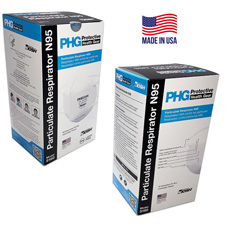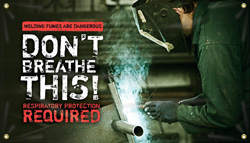| The Home page of ILPI's Safety Data Sheet (SDS) Resource, the leader in SDS information since 1995! | |
| The history and philosophy behind this resource. | |
| A curated collection of books and reference materials concerning Safety Data Sheets and closely related topics. | |
| Paste your plain text SDS into the SDS-Demystifier, and it will be converted into a hypertext-enriched document with links to detailed explanations of each key term. | |
| An extensive list of frequently asked questions about Safety Data Sheets including regulations, content, compliance, and more. | |
| A humorous take on Safety Data Sheet jargon. Fill in the blanks on our entry form to generate a personalized Unsafety Data Sheet to share with your coworkers. | |
| Since 1995, we've maintained this massive curated list of the best places to find Safety Data Sheets on the Internet. | |
| You are here! Way more than a glossary, this hypertext-enhanced resource covers hundreds of SDS-related terms and expert knowledge. Each entry includes both the SDS relevance and links to additional authoritative resources. | |
| Archived results of Safety Data Sheet related polls taken by some of our millions of site visitors | |
| The OSHA regulations behind SDS regulations, including the inspection guidelines and over 400 official interpretations letters under the Hazard Communication Standard | |
| Commercial suppliers of SDS authoring and management software as well as cloud compliance services. | |
| Commercial companies that will create SDS's for your specific needs as well as SDS translation companies. |

Safety signs, banners, and scoreboards? Get yours at Safety Emporium!

Get your PPE such as made in USA NIOSH-approved N95 masks from Safety Emporium.
Definition
Inhalation is the drawing of air or other substances (fumes, mists, vapor, dust etc.) into the lungs (the respiratory system). An easier definition is "breathing in".
The act of inhaling and exhaling is called respiration or, more simply, "breathing".
Additional Info
Inhalation of hazardous materials affects the body in two ways. First, there can be irritation, allergic reaction or other damage to the lungs, respiratory tract, and/or mucous membranes. Second, the foreign substance may be absorbed into the bloodstream in the lungs and then distributed through the body.
Avoid inhaling anything other than clean air. Even if a substance is not listed as hazardous, inhaling dusts etc. can irritate the lungs. Chronic (long-term) inhalation of such substances can lead to permanent damage including bronchitis, emphysema or pneumoconiosis. Likewise, inhalation of sea water can lead to life-threatening acute respiratory distress syndrome (ARDS) (see Further Reading below). And, of course, tobacco products kill.
Even substances such as food flavorings that you would think could be harmless to inhale can cause severe lung damage. One of the first examples of this was severe lung damage found in workers who inhaled large quantities of diacetyl, a substance used to flavor microwave popped corn. More recently, an outbreak of lung injuries associated with e-cigarette use (vaping) has been reported. It's critical to understand that virtually no food flavoring has ever been tested for inhalation safety and yet manufacturers continue to put these untested and potentially deadly products on the market. See the NIOSH alert under Further Reading for additional information.
Always remember to use appropriate engineering controls such as fume hoods and proper ventilation when planning work in which hazardous materials could be inhaled. If these means are not sufficient, be sure to use appropriate personal protective equipment (PPE) such as an appropriately-selected respirator.
Welders should pay close attention to the potential for metal fume fever which can be caused by inhalation of welding fumes. See the Further Reading links in our fumes glossary entry for more information and resources.
SDS Relevance
Inhalation is one of the four routes of entry often discussed on a Safety Data Sheet (the other three are ingestion, absorption, and injection). You will inhalation hazard information in Section 11 (toxicological information) of the SDS and Section 8 (exposure controls/personal protection) will describe methods you can take to avoid exposure such as engineering controls and personal protective equipment such as respirators.
In the event these controls fail, Section 4 (first-aid measures) will explain the symptoms of inhalation (and other) exposure and indicate what type of medical attention will likely be necessary. Obviously, for inhalation exposures, one of the first steps is to remove the victim to fresh air.
Further Reading

Welding fumes are also a respiratory hazard. Remind your employees with safety banners from Safety Emporium.
- Inhalation Injuries at NIH/NLM's MedLine Plus.
- Assessing inhalation injury in the emergency room from Open Access Emerg Med. 2015, 7, pp 31-37.
- Smoke inhalation injury from BJA Education 2015, 15(3), pp 143-148.
- Irritant Gas Inhalation Injury at the Merck Manual Professional version. Also see their Consumer version.
- Acute Respiratory Disease Syndrom (ARDS) at the American Lung Association.
- Acute Toxicity - Inhalation by the SCHC-OSHA Alliance summarizes acute toxicity by inhalation under OSHA's HCS 2012.
- A NIOSH alert: Preventing Lung Disease in Workers Who Use or Make Flavorings.
- OECD Guideline For The Testing Of Chemicals - Acute Inhalation Toxicity at the Organisation for Economic Cooperation and Development (OECD).
- The US National Academies of Sciences Engineering and Medicine has suggested Frameworks for Protecting Workers and the Public from Inhalation Hazards. Note the free download link (requires a free account).
See also: bronchitis, edema, respirator, smoke.